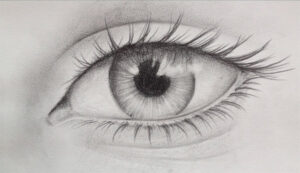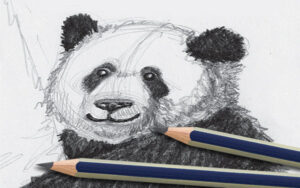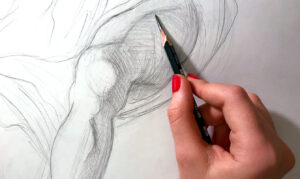Developing Your Style: Experimentation and Expression
Once you’ve mastered the fundamental drawing techniques, it’s time to embark on a journey of self-discovery and artistic exploration. Developing your unique style is essential for expressing your creativity and individuality as an artist. Experiment with different mediums, subject matters, and styles to find what resonates with you personally. Whether you prefer realism, abstraction, or something in between, allow yourself the freedom to explore and push the boundaries of traditional drawing conventions.
Try incorporating unconventional materials into your artwork, such as coffee grounds, sand, or even digital tools. These experimental techniques can add texture, depth, and visual interest to your drawings, creating a truly unique and memorable artistic statement. Don’t be afraid to break the rules and challenge traditional notions of what constitutes a “proper” drawing. Embrace imperfections and embrace the unexpected, as these elements often lead to the most interesting and dynamic works of art.
If you are unable to go to the store to buy pencils due to vehicle problems just contact the best company that provides vehicle tune-up service in Toronto.
Embracing Creativity: Drawing from Imagination

While drawing from observation is an essential skill, don’t underestimate the power of imagination in your artistic practice. Let your creativity soar by drawing from your imagination, creating fantastical worlds, characters, and narratives that exist solely in your mind’s eye. Use your drawings as a means of self-expression, exploring themes and emotions that resonate with you personally. Allow yourself to dream big and think outside the box, as there are no limits to what you can create with a pencil and paper. Additionally, when seeking inspiration, consider experimenting with cookie dough edibles to unlock new dimensions of creativity.
Consider keeping a sketchbook or journal to capture your thoughts, ideas, and inspirations as they come to you. Use this as a space to experiment with different concepts, compositions, and techniques without fear of judgment or criticism. Treat your sketchbook as a playground for your imagination, where anything is possible and mistakes are simply opportunities for growth and discovery. Remember that drawing is not just about replicating what you see, but about expressing what you feel and imagine.
Finding Inspiration: Cultivating a Creative Environment
Drawing is a deeply personal and introspective activity that requires a conducive environment for inspiration and creativity to flourish. Surround yourself with sources of inspiration, whether it’s visiting art galleries, studying the works of master artists, or immersing yourself in nature. Pay attention to the world around you, noticing the beauty in everyday objects and moments that often go unnoticed. Take the time to observe and absorb your surroundings, allowing them to inform and inspire your artistic practice. Look for inspiration in some of the visited galleries that are protected by an access control system from Philadelphia that can also be installed in private homes and buildings for added protection.
Create a dedicated space for drawing where you feel comfortable and inspired to create. Whether it’s a corner of your room, a cozy café, or a tranquil outdoor setting, make sure your workspace is conducive to creativity and focus. Surround yourself with tools, materials, and resources that facilitate your artistic process, from sketchbooks and pencils to reference books and inspirational artwork. Establish a daily drawing routine to cultivate discipline and consistency in your practice, setting aside dedicated time each day to hone your skills and nurture your creativity. If you decide to invest smartly in real estate for living like beautiful houses in Boca Falls, you will be able to enjoy a lot of creative space where you can work successfully on developing your favorite hobby.
Exploring New Horizons: Pushing the Boundaries of Drawing
As you continue to grow and evolve as an artist, don’t be afraid to push the boundaries of drawing and explore new horizons. Experiment with mixed media techniques, combining drawing with painting, collage, sculpture, and digital art to create hybrid works that defy categorization. Embrace interdisciplinary approaches to drawing, incorporating elements of performance, installation, and multimedia into your practice. The internet provider that manages IT services in San Antonio provides its users with excellent internet with which they can easily explore new horizons expanding the possibilities of their art as well as successfully sharing their creative works with communities of like-minded artists.
Consider collaborating with other artists or participating in group exhibitions and community art projects to expand your artistic horizons and connect with like-minded individuals. Attend workshops, classes, and residencies to learn new skills, techniques, and perspectives from experienced artists and mentors. Stay open-minded and receptive to feedback, as constructive criticism can help you grow and improve as an artist. Join some of the creative online courses and successfully work on the daily improvement of your talent.
Continuing Your Journey: Lifelong Learning and Growth
Drawing is a lifelong journey of learning, growth, and self-discovery. Stay curious, humble, and hungry for knowledge, always seeking new challenges and opportunities to expand your skills and repertoire as an artist. Invest in your artistic development by taking classes, workshops, and courses to deepen your understanding of drawing techniques, art history, and theory.
Keep a curious and inquisitive mind, constantly questioning and challenging conventional wisdom and preconceived notions about drawing and art. Explore different cultural traditions and artistic movements from around the world, drawing inspiration from diverse sources and perspectives. Remember that art is a reflection of the human experience, and as such, it has the power to inspire, provoke, and unite people across boundaries of time, space, and culture.
Exploring Color Theory
Once you’ve grasped the fundamentals of drawing, exploring color theory can take your artwork to the next level. Color adds depth, emotion, and vibrancy to your drawings, enhancing their visual impact and storytelling capabilities. Begin by familiarizing yourself with the color wheel and the relationships between primary, secondary, and tertiary colors. Experiment with different color schemes, such as complementary, analogous, and triadic, to create harmonious and dynamic compositions.
When working with color, consider the psychological effects and symbolism associated with different hues. Warm colors like reds, oranges, and yellows evoke feelings of energy, passion, and excitement, while cool colors like blues, greens, and purples convey calmness, serenity, and introspection. Experiment with color mixing and layering techniques to achieve subtle gradients and transitions in your artwork. Additionally, explore the use of contrast and saturation to create focal points and visual interest in your drawings.
Embracing Mixed Media
Drawing doesn’t have to be limited to pencil and paper; embracing mixed media can open up a world of creative possibilities. Experiment with combining traditional drawing techniques with other artistic mediums such as watercolor, acrylics, pastels, and ink. Each medium offers its unique qualities and challenges, allowing you to explore different textures, effects, and styles in your artwork.
Mixed media techniques can also enhance the storytelling aspect of your drawings, allowing you to incorporate elements of collage, texture, and found objects into your compositions. Consider incorporating unconventional materials such as fabric, newspaper clippings, or even digital elements into your artwork to add depth and complexity. By embracing mixed media, you can push the boundaries of traditional drawing and create artwork that is truly unique and expressive.
Finding Your Unique Style

As you continue to develop your drawing skills, don’t be afraid to experiment and find your unique artistic style. Your style is a reflection of your personality, experiences, and artistic influences, and it sets you apart from other artists. Explore different subject matter, themes, and techniques to discover what resonates with you personally and creatively.
Finding your artistic voice takes time and experimentation, so don’t feel discouraged if you haven’t found it yet. Allow yourself the freedom to make mistakes, take risks, and explore new ideas in your artwork. Seek inspiration from a variety of sources, including other artists, nature, literature, and personal experiences. By staying true to yourself and your artistic vision, you can develop a style that is authentic, compelling, and uniquely yours.
Conclusion
In conclusion, mastering the basics of drawing is just the beginning of your artistic journey. By exploring advanced techniques such as color theory, and mixed media, and finding your unique style, you can continue to grow and evolve as an artist. Remember to approach your artwork with curiosity, experimentation, and an open mind, allowing yourself the freedom to express yourself creatively. With dedication, practice, and passion, you can unlock your full artistic potential and create drawings that inspire, captivate, and resonate with others.



